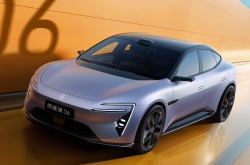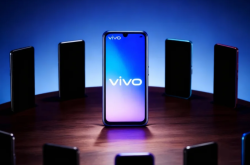Vivo’s VP of Product Huang Tao Joins Management Committee: Is the Company Ready to Outpace Competitors?
![]() 11/28 2025
11/28 2025
![]() 561
561

Vivo: Elevating Its Product Managers to Strategic Roles?
According to Sina Technology, Vivo recently announced internally that Huang Tao, previously serving as Vice President of Product, has been elevated to Vice President of the company and has become a member of the Management Committee. Reporting to Cheng Gang, Vivo’s Senior Vice President and President of the China Region, Huang Tao’s responsibilities remain consistent.
Huang Tao, a seasoned professional who joined Vivo in 2006, began his career on the sales frontlines, climbed the ranks to become a product leader, and eventually ascended to Vice President of Product, overseeing Vivo’s comprehensive product planning. He has played a pivotal role in decision-making for the X Series, Vivo’s flagship product line.
This seasoned expert, who rose from grassroots sales and steered the X Series to success, is no longer just a product manager but has officially entered the uppermost ranks of management at this smartphone behemoth.
This move highlights Vivo’s steadfast commitment to its premium strategy and hints at an impending new battle.
01
Huang Tao
The “Cautious” Architect Behind the X Series’ Ascent
Within Vivo, there is a tacit agreement: The success of the X Series signifies half the battle won in the high-end market.
Introduced in 2012, the X Series has transformed from a sensational “world’s thinnest smartphone” to a term synonymous with “effortlessly excellent photos” among users in the 3,000–6,000 yuan price range. More than just a single product, the X Series has become a central emblem of Vivo’s technological prowess and user confidence.
Throughout its 12-year evolution, nearly every significant decision has been influenced by one individual: Huang Tao.
Unlike executives brought in from outside or tech aficionados, Huang Tao’s journey began modestly: selling the X1 in Vivo’s early brick-and-mortar stores and personally delivering it to users. This hands-on experience provided him with a unique perspective, distinct from that of labs or boardrooms—where specifications can impress, but the user experience must deliver.
This frontline insight crystallized into the X Series’ distinctive product philosophy: not chasing “firsts,” but ensuring “bests.”
Amid an industry plagued by “launch anxiety,” Vivo followed a seemingly cautious yet determined path: delaying technology adoption, refining supply chains, pacing marketing efforts—but never compromising on user experience.
Huang Tao once reflected on this in an interview: “Do consumers always desire the fastest, the earliest? Probably not. They seek a better experience—a phone that genuinely meets their needs.”
He drew a parallel: crafting a great phone is akin to cooking a perfect pot of rice. “We understand what consumers want. When others rush to be first, we remain unperturbed. As long as we can do it better, being slightly later or slower doesn’t matter.”
This philosophy directly influenced key decisions for the X Series.
Take imaging: while competitors vied for night brightness or AI beauty intensity, the X Series shifted early to “authentic photography.”
This was not mere rhetoric. It meant rejecting excessive algorithmic manipulation and returning to optical fundamentals and color accuracy.
Vivo’s collaboration with Zeiss delved into hardware: T* anti-glare coatings reduced ghosting, APO chromatic aberration correction enhanced clarity, and fluorite ultra-low-dispersion glass lenses controlled purple fringing—each addressing real-world issues in backlit, telephoto, or portrait shots.
This “problem-solving” approach extended to device design.
As the industry rushed toward 7-inch screens, the X300 Series introduced a 6.31-inch compact straight-screen variant. Internally, doubts arose: “Does this seem unflagship?” But Huang Tao insisted, “Many users complain that phones are too large for jeans pockets and difficult to use one-handed.” The result? A hit in offline sales, particularly among young women and business users.
Similar foresight guided X Series investments in cross-ecosystem compatibility. The X300’s seamless file transfers with iPhones and Macs addressed a genuine pain point for users of multiple devices.
This unwavering attention to detail has fostered irreplaceable trust in the premium market.
Third-party data reveals that the X100 Series consistently leads competitors in Net Promoter Score (NPS) within the 4,000–5,000 yuan segment, driving significant repurchase rates and word-of-mouth. The X Series has emerged as Vivo’s only consistently reliable premium product line.
The results validate the strategy: amid Huawei’s resurgence, Apple’s downward encroachment, and fierce competition from Xiaomi, OPPO, and even Vivo itself, the X Series stands out as one of the few Android products gaining steady market share above 4,000 yuan in recent years.
Yet, Vivo is far from having “conquered the summit.” The premium battle continues.
Huawei builds barriers with in-house chips and HarmonyOS; Xiaomi leverages ecosystems and cost efficiency; while Vivo’s differentiated path—focusing on imaging and user-centric innovation—has shown promise but requires time to prove lasting competitiveness.
02
Products No Longer “Support” Markets—They “Engage” in the Battlefield
While Huang Tao drove Vivo’s mobile imaging breakthroughs, his expertise remains firmly rooted in product. His promotion to Vice President and entry into the Management Committee signal a deeper strategic intent.
Details such as “reporting to China Region President Cheng Gang” and “unchanged responsibilities” indicate that this is not a routine reshuffle but a calculated strategic move—unifying premium ambitions internally while projecting Vivo’s resolve to dominate the Chinese market.
The reporting structure is particularly revealing.
In most tech firms, product leaders at this level report to CTOs or CEOs to ensure technical neutrality and long-term vision. Vivo’s decision to place Huang Tao under Cheng Gang, who oversees China’s product, sales, channels, and marketing, tightly links product definition to frontline market execution.
This means future X Series rhythms, feature trade-offs, and pricing will respond even faster to China’s real-time battles: store feedback, promotional timelines, and rival launches could swiftly shape product decisions.
This “theater-led” product model is fiercely practical in the 4,000–6,000 yuan “premium climb” segment.
Currently crowded with Huawei’s Mate/P Series, Xiaomi’s Digital line, Honor’s Magic, and OPPO’s Find X—not to mention mid-range upstarts—each product cycle lasts just 3–6 months. Speed in translating user pain points into advantages is critical.
Vivo’s move is tantamount to revealing its hand: “We bring the X Series’ imaging legacy and user trust, now paired with the shortest path from product vision to market impact. You chase specs; we chase experience. You fight for firsts; we fight for conversions.”
This reflects an evolved view of “premiumization”—no longer just stacking specs or raising prices but a holistic war centered on users, anchored by channels, and waged with products. And Huang Tao is the architect who knows best how to wield that weapon.
For Huawei, Xiaomi, Honor, and OPPO, this organizational shift may pose a greater threat than any launch event or technology.
Premium battles once depended on tech reserves, brand momentum, or channel reach.
But Vivo is elevating the battlefield to a new dimension: organizational agility. While rivals’ product teams endure multiple rounds of reviews to adjust a lens parameter, Vivo’s frontline feedback might already redefine imaging architecture for the next prototype. While internal debates rage over “whether to launch a compact flagship,” the X Series’ new size has already undergone trial sales in stores.
This “adjust-on-the-fly” capability is devastating in a saturated market.
Of course, rivals can still compete on chips, satellite connectivity, or AI models. But Vivo has chosen a simpler, harder-to-replicate path: making products the closest weapons to users and organizations the closest command posts to the frontline.
In this premium tug-of-war, where “reaction speed” and “execution precision” matter most, Huang Tao’s entry into the Management Committee may be Vivo’s opening strategic move.
- END-






